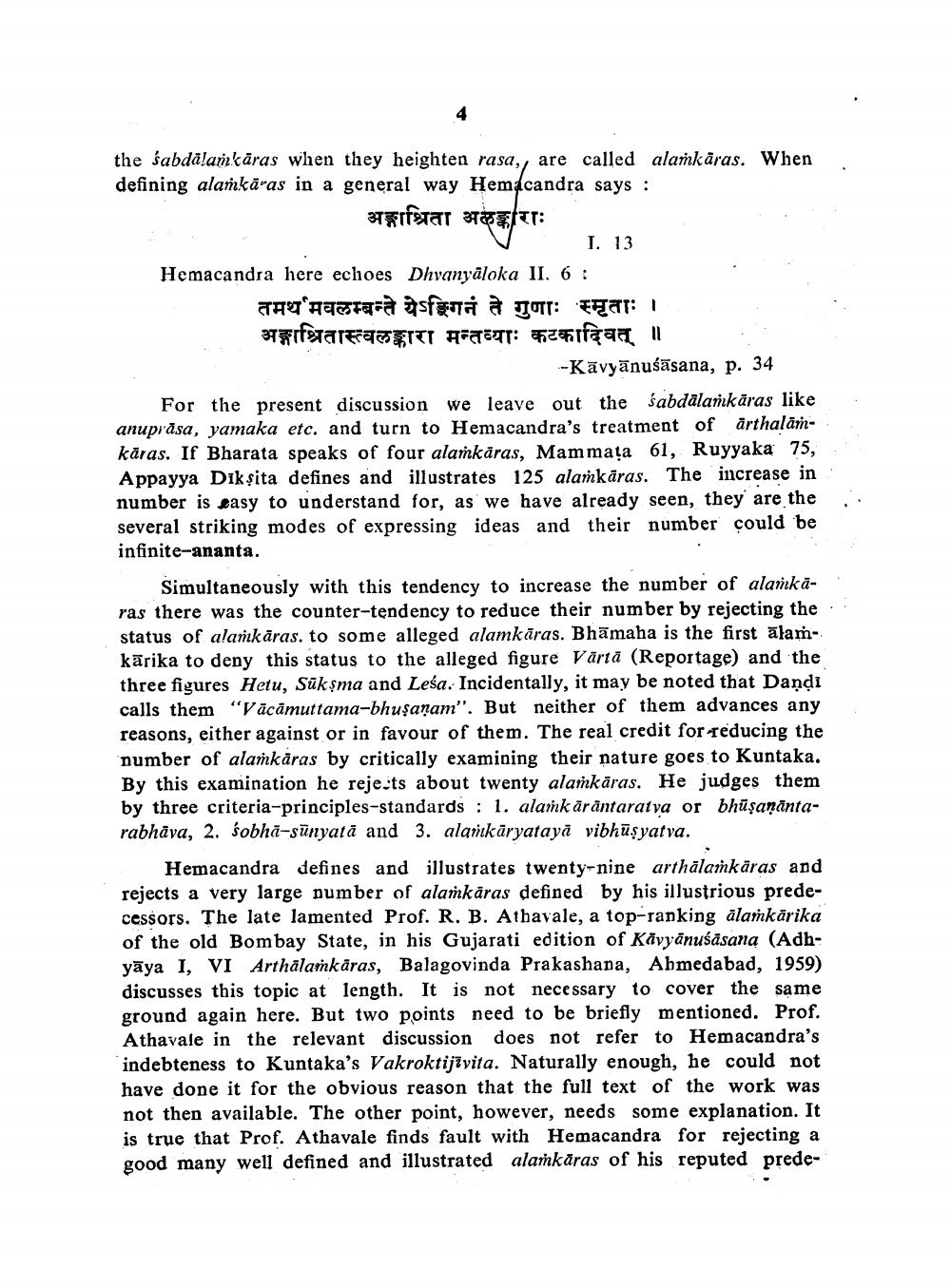Book Title: Sambodhi 1988 Vol 15 Author(s): Ramesh S Betai, Yajneshwar S Shastri Publisher: L D Indology Ahmedabad View full book textPage 9
________________ the śabdălankāras when they heighten rasa,, are called alamkāras. When defining alankāras in a general way Hemdcandra says : अङ्गाश्रिता अलङ्काराः 1. 13 Hemacandra here echoes Dhvanyaloka II. 6: तम मवलम्बन्ते येऽगिनं ते गुणाः स्मृताः । अङ्गाश्रितास्त्वलकारा मन्तव्याः कटकादिवत् ॥ -Kāvyānuśāsana, p. 34 For the present discussion we leave out the śabdalankäras like anuprāsa, yamaka etc. and turn to Hemacandra's treatment of arthalāmkāras. If Bharata speaks of four alamkāras, Mammața 61, Ruyyaka 75, Appayya Dikşita defines and illustrates 125 alamkaras. The increase in number is easy to understand for, as we have already seen, they are the several striking modes of expressing ideas and their number could be infinite-ananta. Simultaneously with this tendency to increase the number of alankaras there was the counter-tendency to reduce their number by rejecting the status of alankäras. to some alleged alamkāras. Bhāmaha is the first alankārika to deny this status to the alleged figure Värtā (Reportage) and the three figures Hetu, Sükşma and Leśa. Incidentally, it may be noted that Dandi calls them "Vācāmuttama-bhuşanam". But neither of them advances any reasons, either against or in favour of them. The real credit for reducing the number of alamkaras by critically examining their nature goes to Kuntaka. By this examination he rejects about twenty alamkāras. He judges them by three criteria-principles-standards : 1. alamkäräntaratva or bhūşanāntarabhāva, 2. śobhā-sünyata and 3. alarıkāryatayä vibhüşyatva. Hemacandra defines and illustrates twenty-nine arthālamkäras and rejects a very large number of alamkāras defined by his illustrious predecessors. The late lamented Prof. R. B. Athavale, a top-ranking alamkārika of the old Bombay State, in his Gujarati edition of Kävyānuśāsana (Adhyāya I, VI Arthālamkāras, Balagovinda Prakashana, Ahmedabad, 1959) discusses this topic at length. It is not necessary to cover the same ground again here. But two points need to be briefly mentioned. Prof. Athavale in the relevant discussion does not refer to Hemacandra's indebteness to Kuntaka's Vakroktijīvita. Naturally enough, he could not have done it for the obvious reason that the full text of the work was not then available. The other point, however, needs some explanation. It is true that Prof. Athavale finds fault with Hemacandra for rejecting a good many well defined and illustrated alankāras of his reputed predePage Navigation
1 ... 7 8 9 10 11 12 13 14 15 16 17 18 19 20 21 22 23 24 25 26 27 28 29 30 31 32 33 34 35 36 37 38 39 40 41 42 43 44 45 46 47 48 49 50 51 52 53 54 55 56 57 58 59 60 61 62 63 64 65 66 67 68 69 70 71 72 73 74 75 76 77 78 79 80 81 82 83 84 85 86 87 88 89 90 91 92 ... 222
